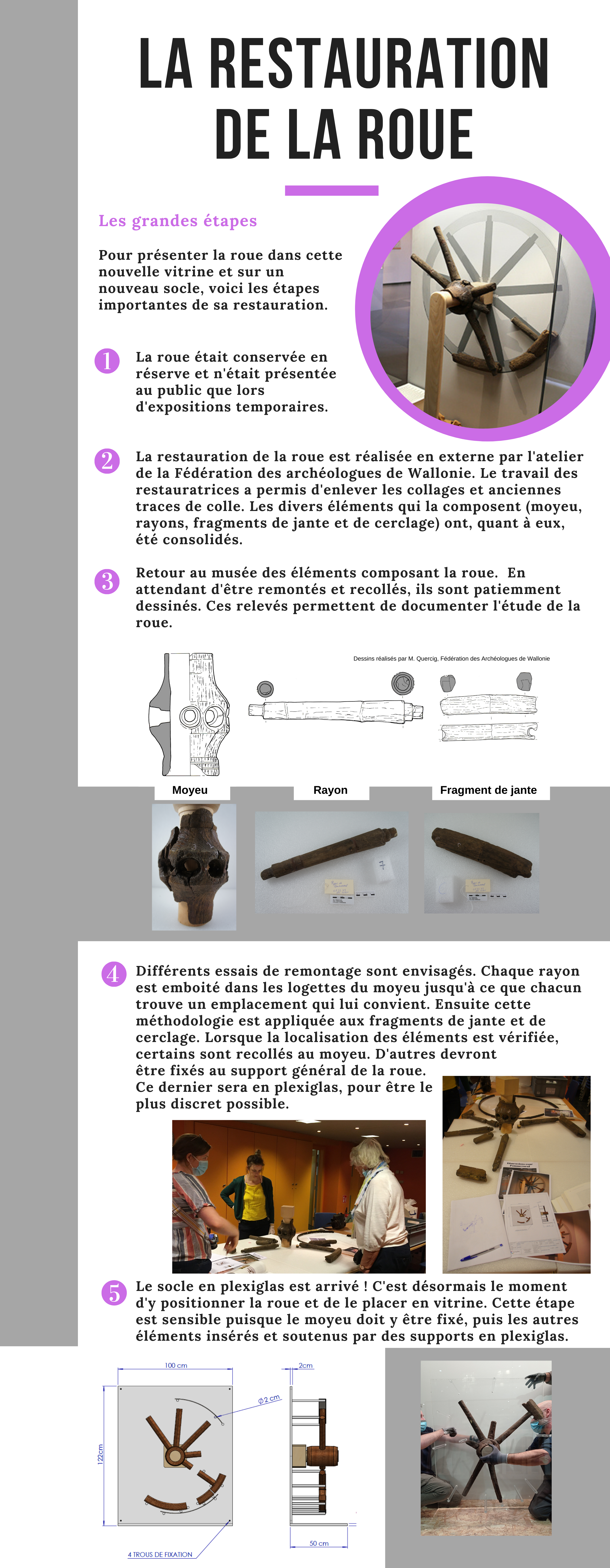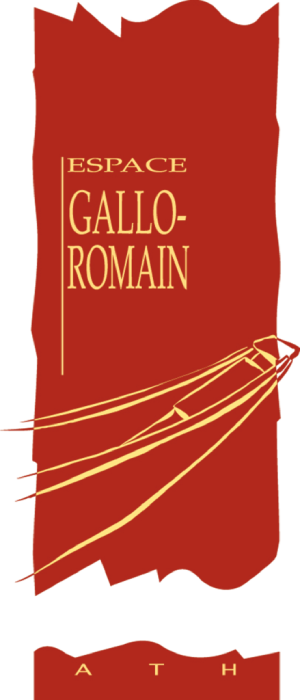
The most important steps
See here the important stages of the restoration to present the wheel in this new display case and on a new pedestal.
1. The wheel was kept in reserve and was only shown to the public at temporary exhibitions.
2. The restoration of the wheel is carried out externally by the workshop of the Federation of Archaeologists of Wallonia. The work of the restorers made it possible to remove the collages and old glue trails. The different elements that make up it (hub, spokes, rim and strapping fragments) are in turn consolidated.
3. The different wheel elements return to the museum. While they wait to be reassembled and glued, they are quietly signed off. These measurements make it possible to document the study of the wheel.
4. Several reassembly trials are being considered. Each spoke is nested in the niches of the wheel hub until each finds a suitable location. This method is then applied to the rim and strapping fragments. When the location of the elements is checked, some are glued to the hub. Others will need to be fixed to the general support of the wheel.
The latter will be in plexiglass, to be as discreet as possible.
5. The plexiglass base has arrived! Now is the time to position the wheel and place it in the display case. This step is very sensitive because the hub has to be attached to it and then the other elements are inserted and supported by plexiglass supports.

Commentaires récents